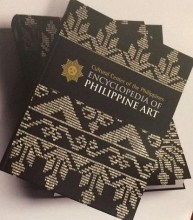For more than six decades, personnel serving in the Philippines with SIL, Wycliffe’s key partner organization, have researched many of the languages spoken in that country. They’ve also kept their cameras handy, taking thousands of photographs of daily life among the language groups in which they’ve served.
Now, several hundred of these images from SIL Philippines’ photo archive collection are gracing the pages of a large, prestigious encyclopedia, recently revised and published by the Cultural Center of the Philippines (CCP).
 Entitled the Encyclopedia of Philippines Art (EPA), the 12-volume reference is the most authoritative and comprehensive source of information on art and culture in the country. Also available in a digital edition, the encyclopedia focuses on peoples of the Philippines, as well as architecture, visual arts, dance, music, theater, film, broadcast arts and literature.
Entitled the Encyclopedia of Philippines Art (EPA), the 12-volume reference is the most authoritative and comprehensive source of information on art and culture in the country. Also available in a digital edition, the encyclopedia focuses on peoples of the Philippines, as well as architecture, visual arts, dance, music, theater, film, broadcast arts and literature.
It was for the “peoples” section of the encyclopedia that EPA editors approached SIL in 2016 to help supply visuals of indigenous groups, says Manuel Tamayao, SIL Philippines’ librarian and archivist.
“They researched for three days looking at our photo gallery,” he recalls. “Initially they selected 800-plus photos, but they trimmed it down to [select only] colour images.
“They were specifically looking for anything related with culture—images of the people groups, structure of houses, musical instruments, and weavings.”
The CCP team had plenty to choose from. SIL Philippines boasts a collection of 72,800 shots from the language projects where its personnel have worked since 1953. Now completely digitized, many of the images were originally slides, negatives and photographic prints.
While reviewing the collection, CCP selected 313 images for its updated EPA, which was published as a first edition in 1994. Tamayao says the chosen photos are in colour, covering a period from 1980 to 2000. Thirty-one ethnolinguistic groups in the Philippines—ranging from the Agta and the Ifugao, to the Palawano and the T’boli—are represented.
The encyclopedia’s first volumes on peoples of the Philippines contain essays about their history, economy, political system, social organization and customs, religious beliefs and practices, architecture and community planning, visual arts and crafts, literary arts, performing arts.
Source: sil.org

